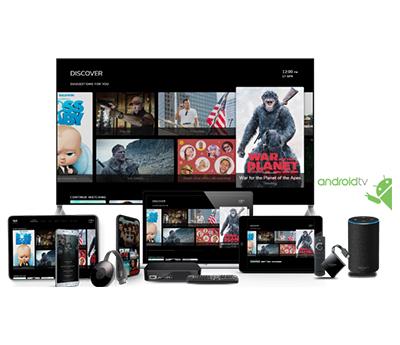
By Olivier Biot, Solution Marketing Manager, NAGRA
As consumers migrate to a variety of new streaming solutions, broadband providers have a new opportunity to provide them with an aggregated streaming service. Through promotion, recommendation and subscription bundling, consumers are provided with access to content from a broad range of streaming solutions that are centralized through a single subscription delivered via an operator branded app.
While providing an aggregated streaming solution seems easy on paper, it’s a vast and complex topic for which it is difficult to find one model that fits all scenarios. This is because any model is based on the respective broadband provider’s ambition, other parties involved, existing and emerging legislation, commercial agreements, user habits and perhaps most importantly, consumer preferences! Not only can it vary from one region to another but also from country to country – and this matters where local content can be a key differentiator against the competition.
Nevertheless, there are some emerging trends in terms of aggregation models:
-
Content-less Aggregators, more commonly known as search aggregation solutions, aim to provide a simple aggregation model through an app or web page - with the sole aim of the consumer finding the content they love.
-
Google TV allows native content aggregation through the Android TV OS Platform. This includes third-party OTT Apps, service bundling, and the benefit of being available on a large choice of retail devices, including Smart TVs.
-
Operator Launcher adds value on top of the Google TV experience. This provides a user centric approach, with multi-service discovery, subscription bundling, and a true multi-screen operator experience on both retail and managed devices such as set-top boxes.
There are of course, other well-known organizations that also offer aggregation. These include Apple, Samsung and LG who are also providing some level of aggregation on tvOS, Tizen and webOS respectively. However, they are not yet as advanced as Google either from a reach, breadth of global or regional agreements, or ecosystem maturity.
Let’s now examine the pros and cons of each type of aggregation approach:
Search Aggregator
While this model is probably the simplest it is also the most difficult to achieve commercially. Many such aggregators face challenges as they do not host the content but instead provide links to the service provider sites and can then struggle to obtain the rights to access and use the required metadata (with some reverting to scraping techniques). Furthermore, their revenue model also faces constraints - such as banner advertising which cannot be inserted into the video. Equally revenue sharing may create a stumbling block as many content providers may not be willing to take part in such an approach.
Google TV
With the recent launch of Google TV, Android TV OS is reaching the pinnacle of the aggregation model and user experience, with a built-in native content aggregation approach for all the major applications, including the possibility to include local OTT app content. This is a great start for broadband providers with no or limited history of payTV that want to offer an aggregation solution, without the need for an upfront investment. The other benefit of this approach is that it focuses on retail devices such as Smart TVs and dongles with the latter now reaching prices as low as 25 USD for a basic HD version. Subscription bundling can also enable the operator to keep a competitive edge and may include services outside of the traditional content scope such as gaming via Google Stadia - now widely available on modern retail devices.
Operator Launcher
For broadband providers that want to keep full control and provide a true user-centric multi-screen experience on set-top boxes, Android TV operator Tier allows them to provide content aggregation across not only third-party content but also in-house or local content. Aggregation via universal search and discovery enables the bundling of services and offers a sticky solution that attracts and retains subscribers to the service. When the operator takes on the responsibility of running the launcher, they also must form commercial agreements with all the content providers to get their apps on the box and enable the metadata and billing relationships.
Conclusion
Irrespective of what may be the most relevant solution for a given operator, NAGRA has a proven solution through its OpenTV Video Platform that delivers all the capabilities available to its pay-TV customers to non-content acquisition focused operators who want to aggregate a collection of streaming services. They can benefit from the same powerful technology as their pay-TV counterparts and focus on curating, promoting, and monetizing a content catalog to drive broadband adoption and usage. This allows operators to aggregate major streaming services, such as Netflix and provide consumers with a one-stop-shop for all their streaming needs through capabilities such as deep-linking, deep-search and carrier billing. Such solutions also allow the broadest audience to be addressed with a large range of supported devices through user-centric apps, designed for aggregation solutions, that understand consumer behavior through in-built comprehensive data-decisioning tools.
If you’d like to continue the discussion about how NAGRA’s range of streaming and aggregation solutions can help extend your service reach to new subscribers, please contact us.
